Palachinki (Bulgarian crepes) are a heartwarming example of how simple ingredients can weave magic on a plate. This article will help you learn about this treat, from its definition to the required tools and ingredients to make it.
After reading this article, you’ll master making these crepes, with many tips to elevate your Palachinki. And that’s not all; I also provide the ideal storage methods and other mouth-watering Bulgarian dishes.
So, brace yourself because you’re about to experience the culture and tradition that breathes life into Palachinki!
Palachinki – Bulgarian Warmth And Comfort Dish
Palachinki (Палачинки), also known as Bulgarian crepes, is a staple in Bulgaria, particularly enjoyed as a dessert or breakfast dish. It was once made to provide warmth and comfort during winter.
Today, these crepes are a favorite during festive occasions and family gatherings. They are filled with many ingredients, from sweet fruit jam or chocolate to savory ham and cheese. My Palachinki uses a popular Bulgarian combination for the filling: honey and cheese.
Are There Any Differences Between Palachinki And French Crepes?
Yes, there are. The most significant gap between Palanchinki and French crepes is the thickness. French crepes are quite delicate, as thin as tissue paper. In contrast, Palachinki is slightly thicker.
Bulgarian crepes are also smaller than their French counterparts, thus easier to handle. Moreover, Palachinki can use a bit more butter or oil to cook the batter than French crepes.
Which Tools Does Palachinki Need?
Palachinki is not so different from other crepes, especially regarding the tools to make it. So, the necessary tools for preparing Palachinki are quite simple and easy to find. Below is a list of them:
Which Ingredients Do I Need To Make Palachinki?
All names below are the ingredients you need to make Palachinki (Bulgarian crepes). I also include several alternatives for those that can be difficult to buy.
For the Batter:
For the Filling:
How To Make Palachinki?
Regarding how to make Palachinki (Bulgarian crepes), there are three main steps: prepare the batter, cook the crepes, and fold the crepes with fillings. Each process is described thoroughly with images so you can easily recreate it.
Step 1: Prepare The Batter
Combine eggs with milk, flour, and a pinch of salt in the mixing bowl. Whisk the ingredients until smooth. Let the mixture rest for a few minutes.
Step 2: Cook The Crepes
Heat your non-stick pan over medium heat and grease it lightly with butter. Pour a ladleful batter onto the pan and swirl it around to spread it evenly.
Cook your crepe until the edges start to lift and the bottom is golden brown. Flip it and cook for another minute.
Keep cooking the crepes one by one until the batter runs out.
Step 3: Fold The Crepes With Fillings
Cut a slice of the brined cheese and crumble it over half a crepe. Then, drizzle honey over the cheese.
Carefully fold the crepe over the filling into a half-moon shape. And fold it twice more to make it look like in the images.
Repeat the process with the remaining crepes.
Serve them warm, sprinkled with more honey and crushed walnuts if desired.
What Are The Tips For A Perfect Bulgarian Crepes – Palachinki?
The tips for a perfect Palachinki are using proper tools and paying close attention to the pan’s temperature. Then, your creativity will bring the perfect finishing touch.
How To Store Palachinki Crepes?
If you have some leftovers, here is how to store Palachinki crepes:
Keep each crepe between waxed or parchment papers. Then, place them in an airtight container or a Zip bag. They can last for 2-3 days in the fridge or up to 4 months in the freezer.
To reheat these crepes, take the portion you need and microwave it at high temperatures for 15 seconds. If it’s frozen, let it thaw in the fridge overnight first.
Why Are My Palachinki Crepes Easy To Tear When Flipping?
This situation can happen when your crepe batter is too thin. You can thicken it with flour. In contrast, if the batter is too thick, add several tablespoons of milk to make it thinner.
Does Palachinki (Bulgarian Crepes) Satisfy Your Appetize?
Palachinki, the Bulgarian crepes, has managed to captivate me with its delightful simplicity yet deep flavors. With their tender texture and fillings, these crepes can easily elevate any ordinary breakfast into a wonderful time.
If you are also captivated by these Bulgarian crepes, don’t keep it to yourself! Hit that like button and spread the joy of Palachinki by sharing this article. And why not tell other readers about your favorite Palachinki recipe in the comments below?
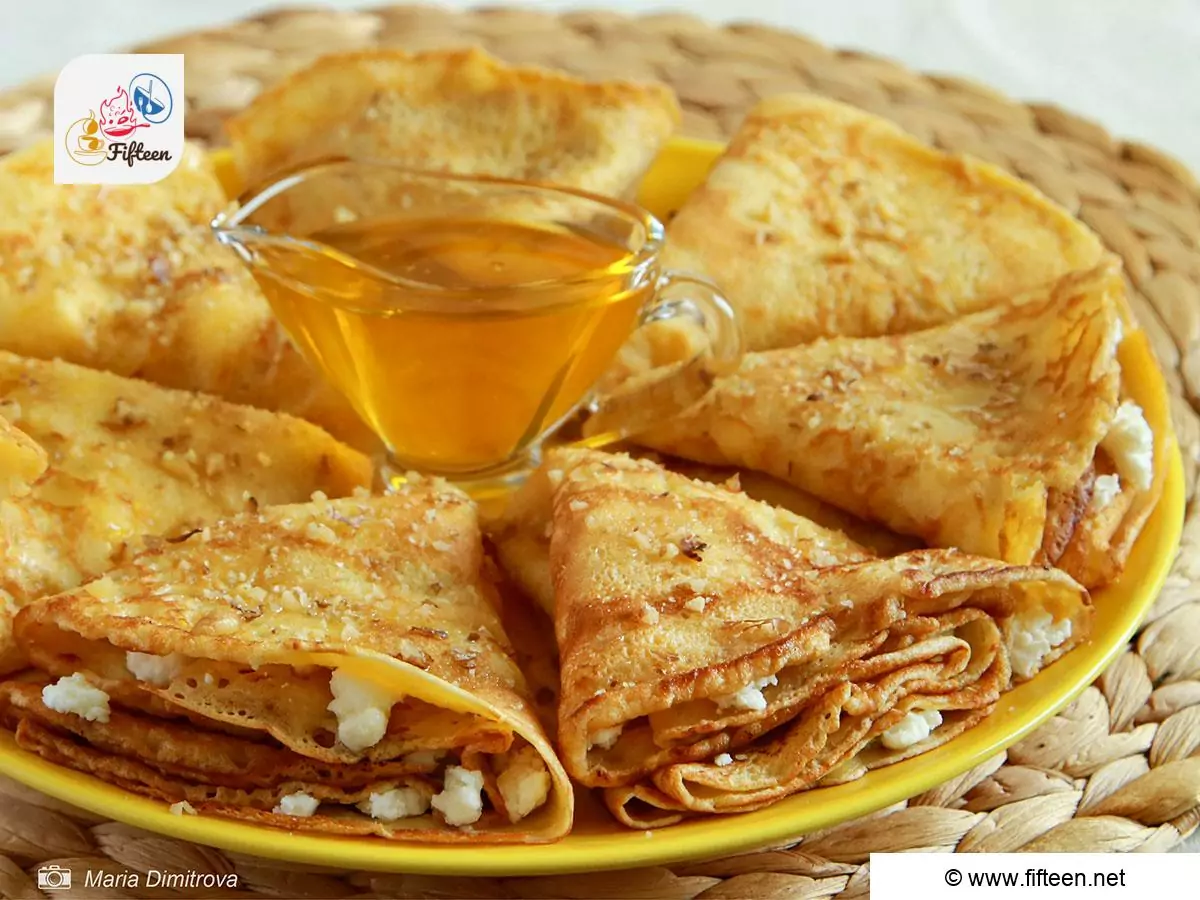
Palachinki (Палачинки) Recipe (Bulgarian Crepes)
Equipment
- Non-stick, medium-sized pan
- A large bowl
- Whisk
- A small ladle
Ingredients
- 3 eggs
- 2 cups of milk
- A pinch of salt
- 0.5 pound 250 grams of all-purpose flour
- 4.5 ounces 125 grams of cheese (ideally white brine cheese or feta cheese)
- 0.5 cup honey
- 5 tablespoons unsalted cold butter
Instructions
- Mix eggs with milk, flour, and salt in a mixing bowl until smooth. Leave the mixture to rest for several minutes.
- Afterward, place your non-stick pan on medium flame. When it’s hot enough, grease it lightly with butter. Use your ladle to scoop the batter and pour it onto the pan. Swirl the batter around so that it can spread evenly.
- Cook the batter until its bottom turns golden brown and the edges begin to lift. Next, flip it over and cook for 1 minute.
- Repeat the steps 3 and 4 until you use all the batter.
- Take 1 cheese slice and crumble it over half of a crepe. Then, drizzle honey on top.
- Fold the crepe into a crescent shape and fold for another two times.
- Repeat the steps 6 and 7 with the remaining crepes. Serves these crepes warm with honey and crushed walnuts on top.
Video
Notes
- The total cooking time is for 10 servings.
- A small ladle is the best tool to measure the suitable amount of batter for each crepe.
- You can use a crepe pan or a non-stick pan to make Palachinki.
- Sprinkle some water on the pan’s surface to check its temperature. If the water sizzles immediately, your pan is hot enough.
- Before making each crepe, stir the batter several times to prevent the flour from sinking to the bottom.
- Control the temperatures so your crepes won’t get burned or undercooked.
- Besides cheese and honey, you can fill Palachinki crepes with other ingredients: preserves, Nutella, fruits, nuts, etc.
- Feel free to top Palachinki crepes with powdered sugar or fruits.


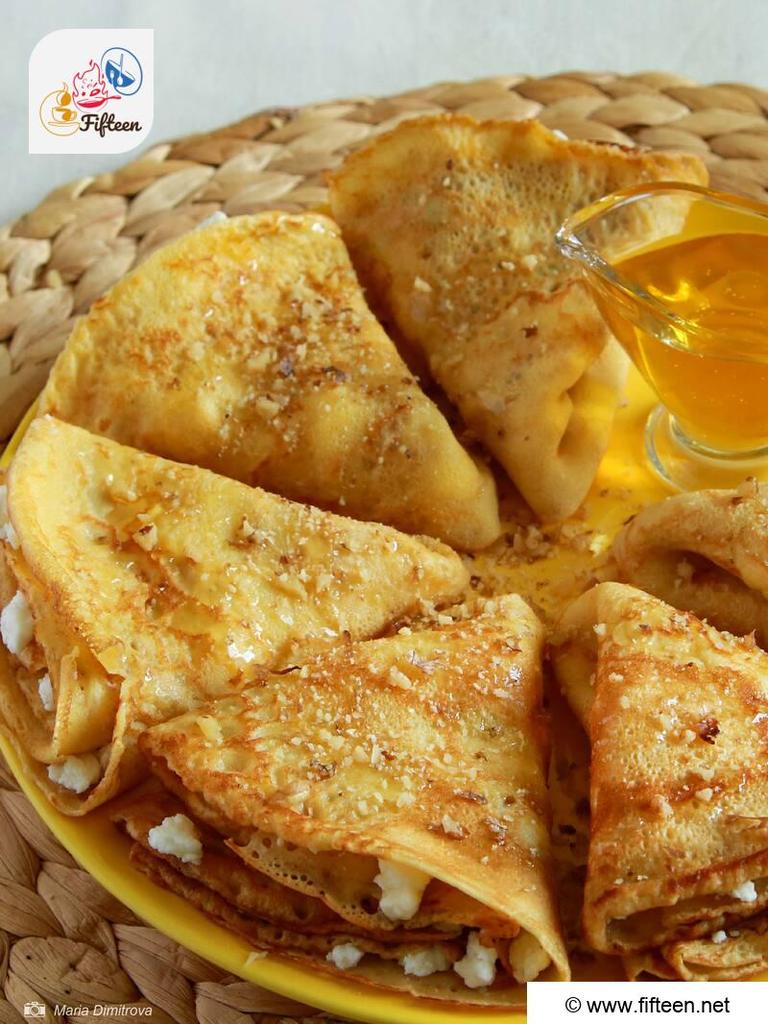
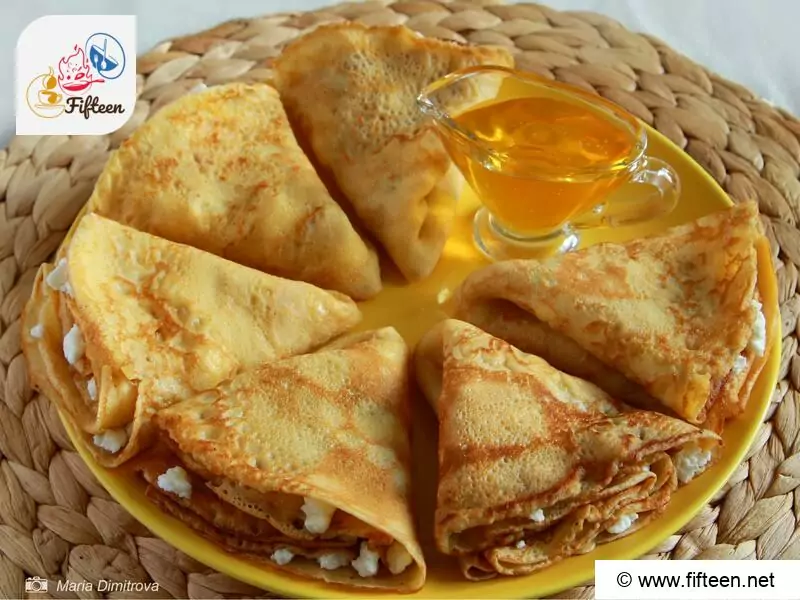
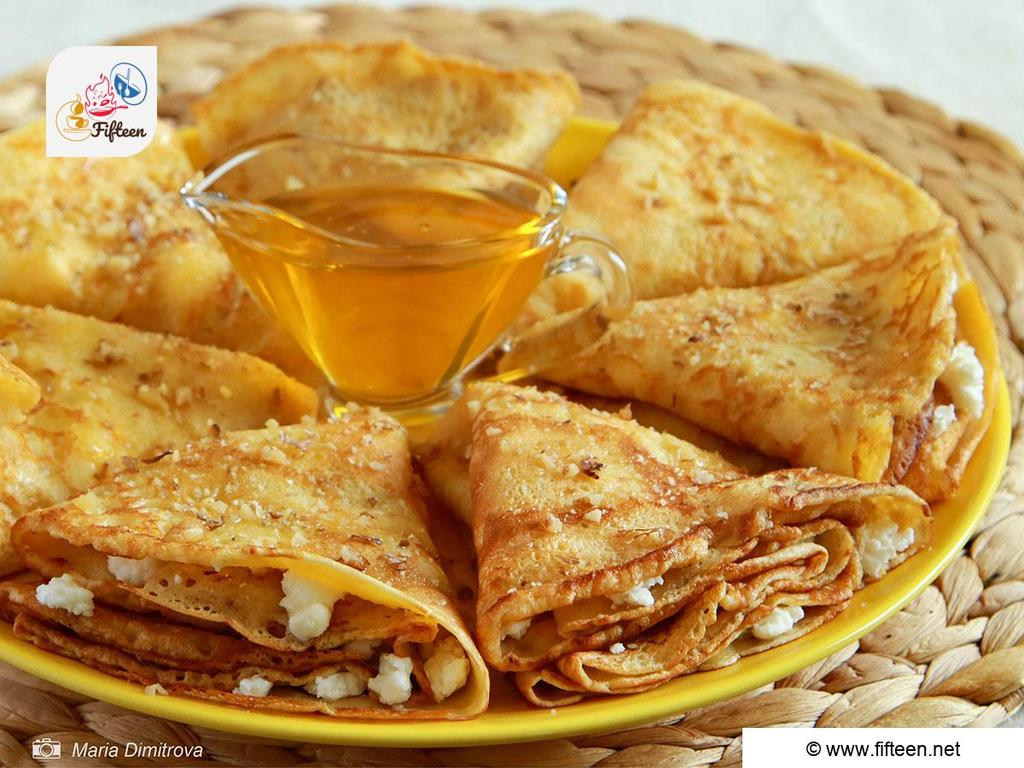
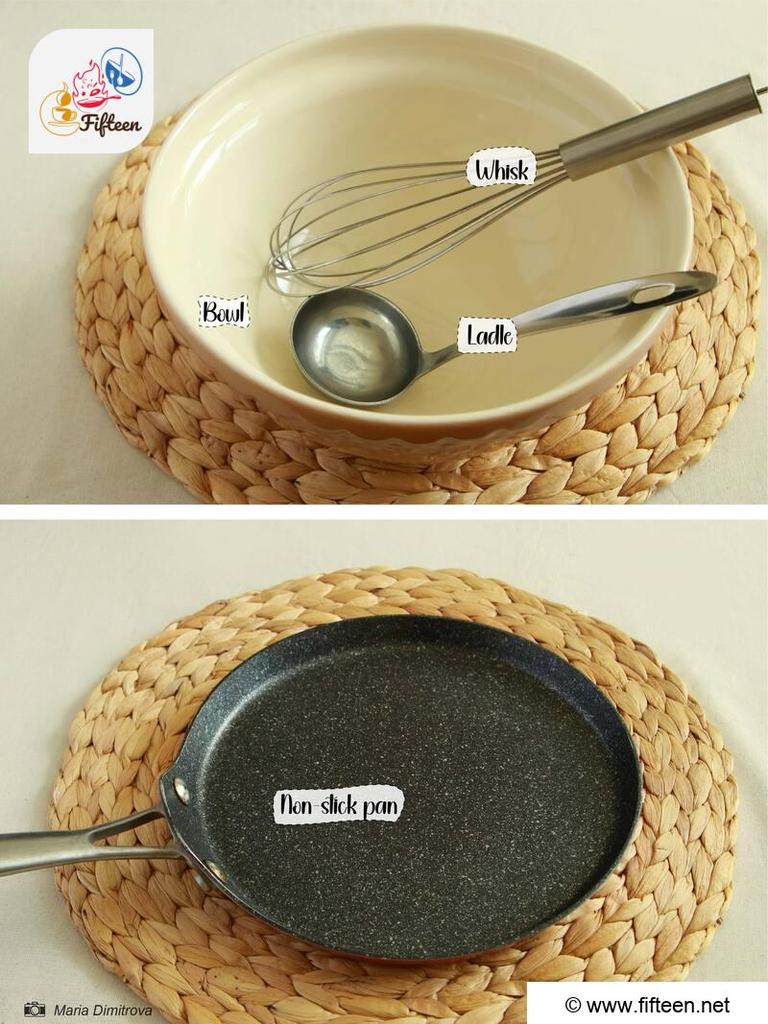
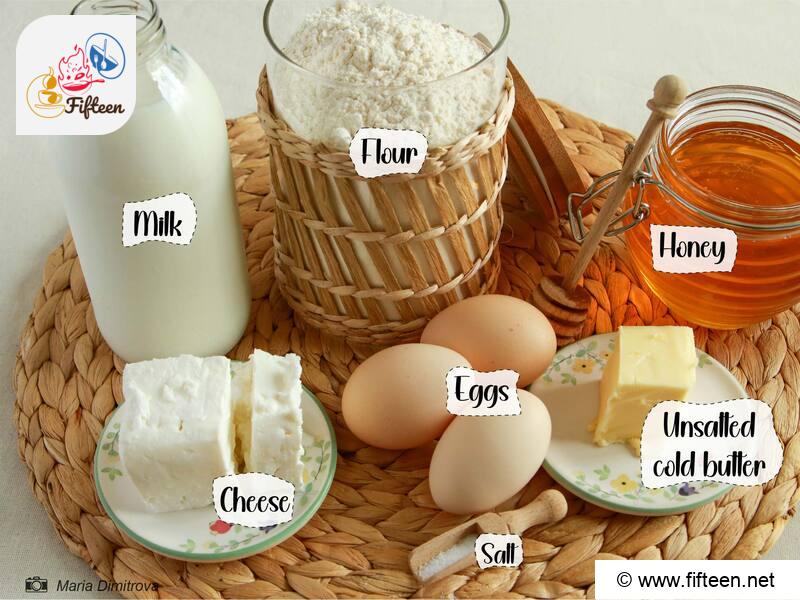
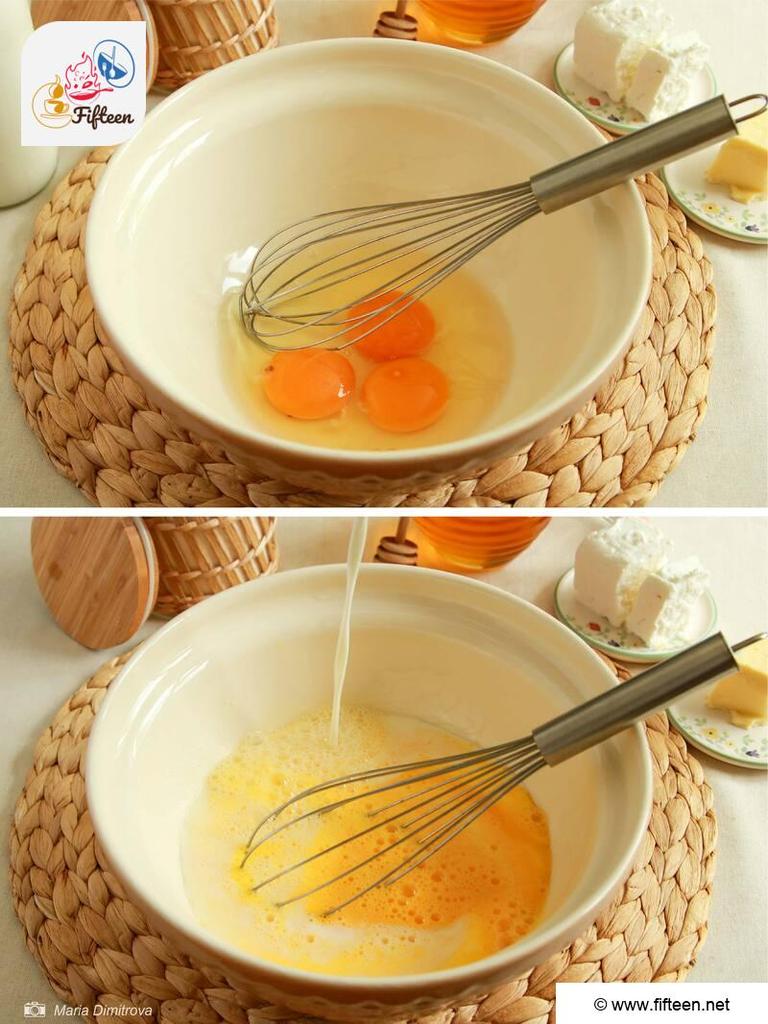
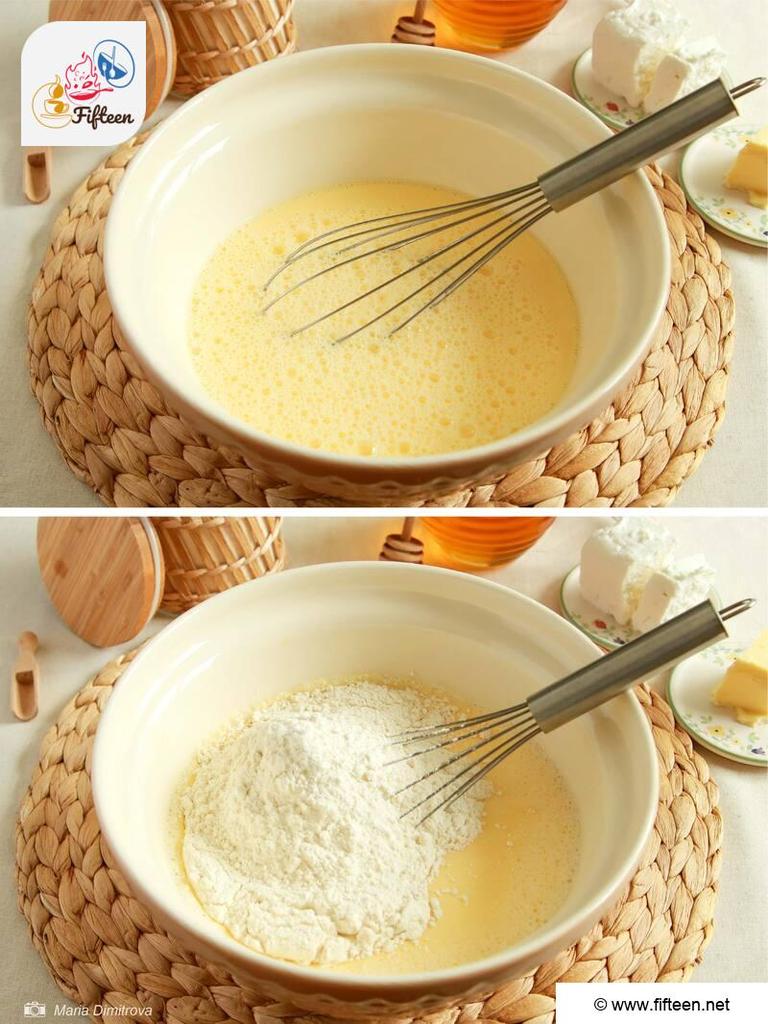
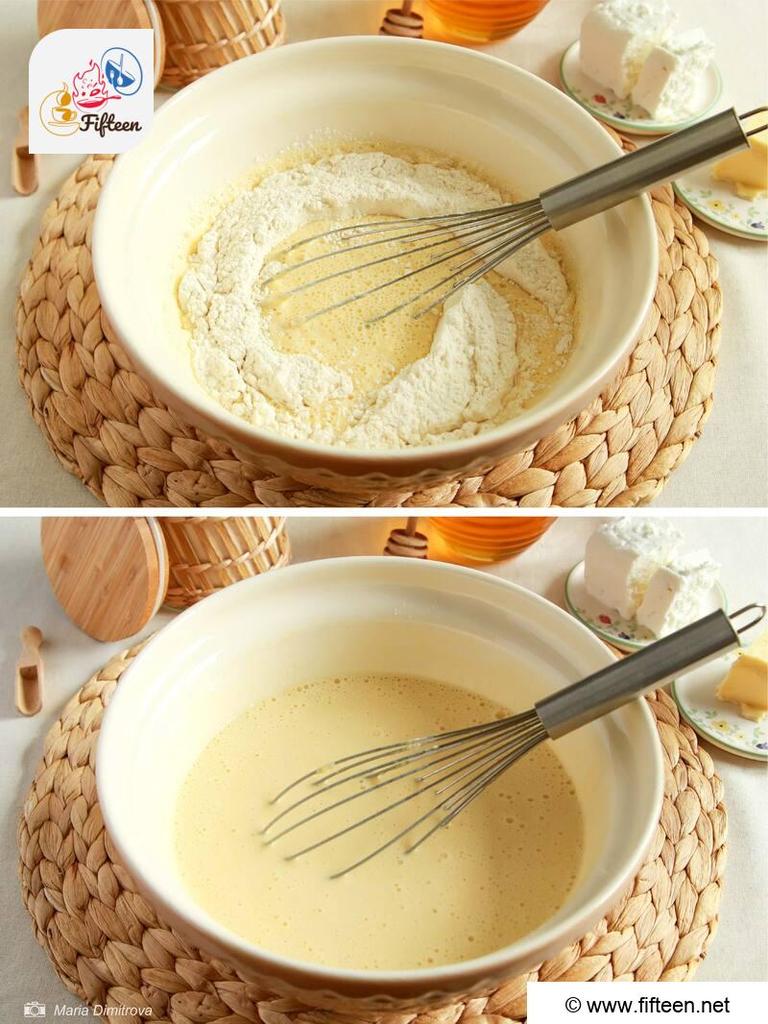
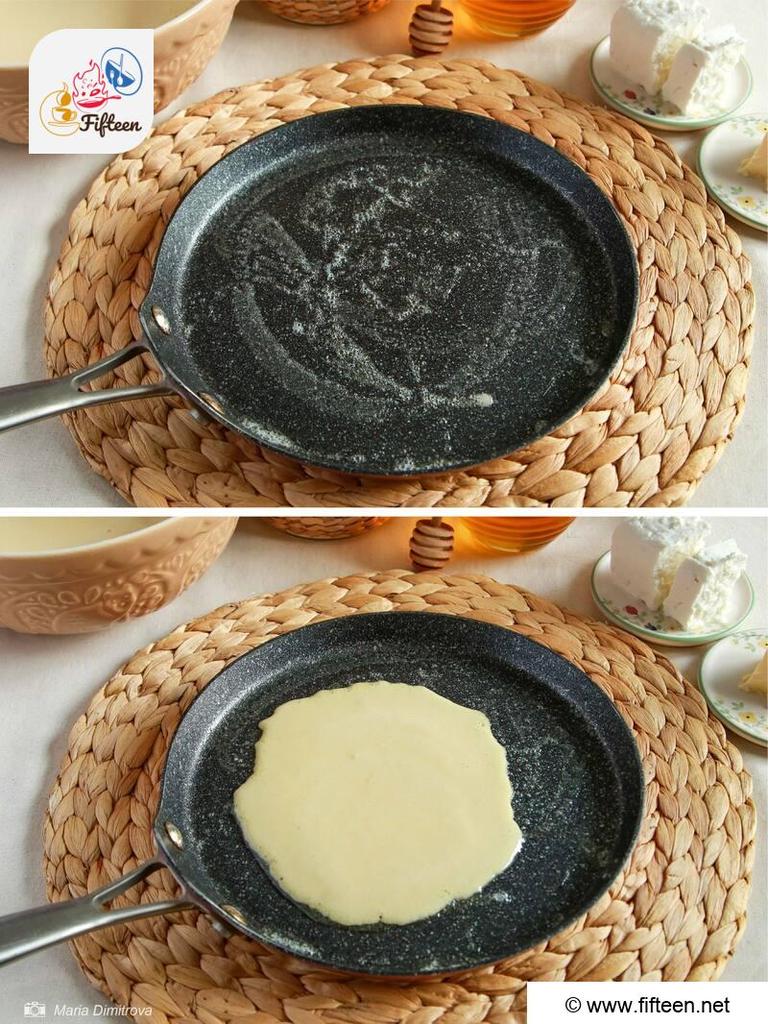
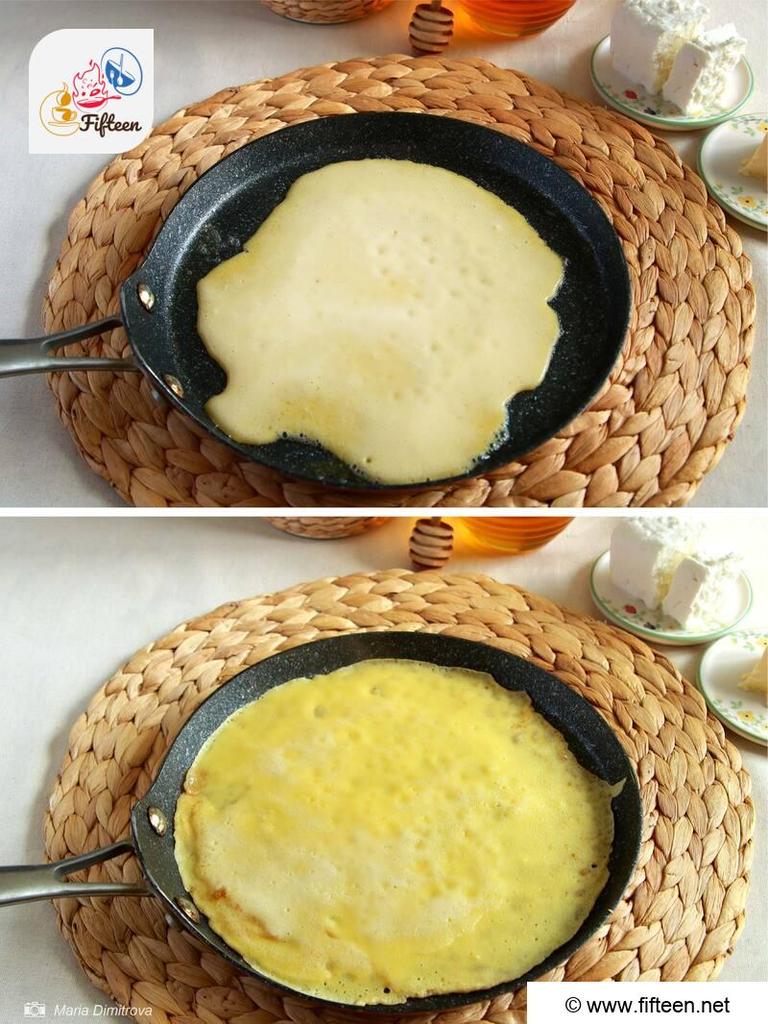
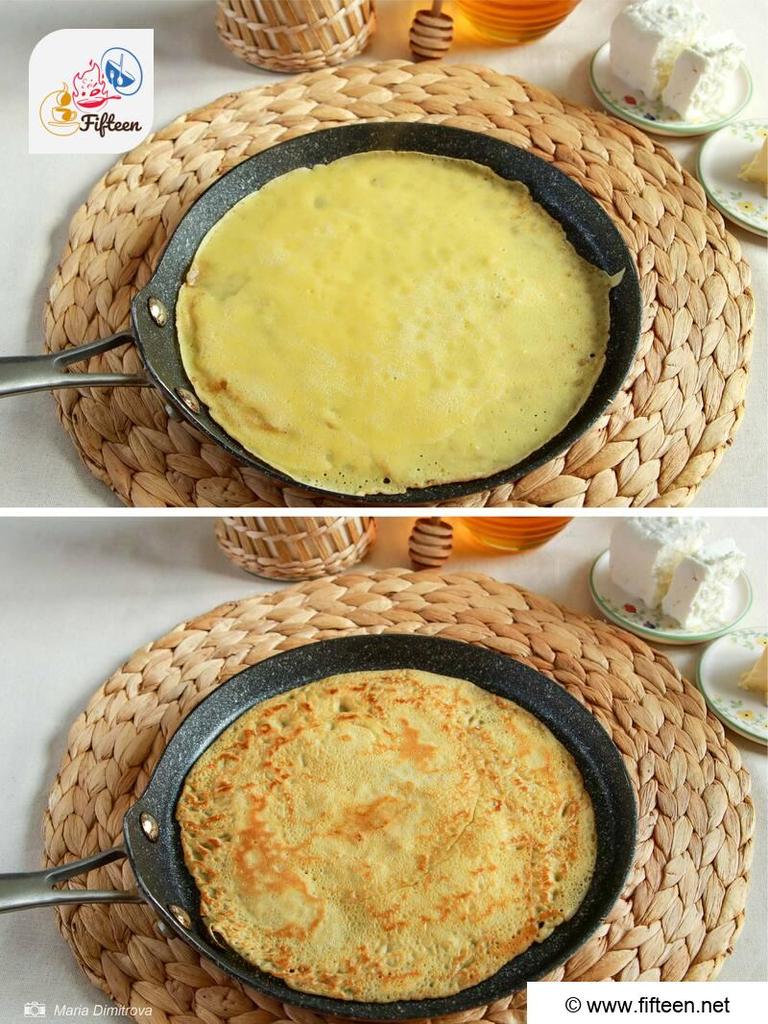
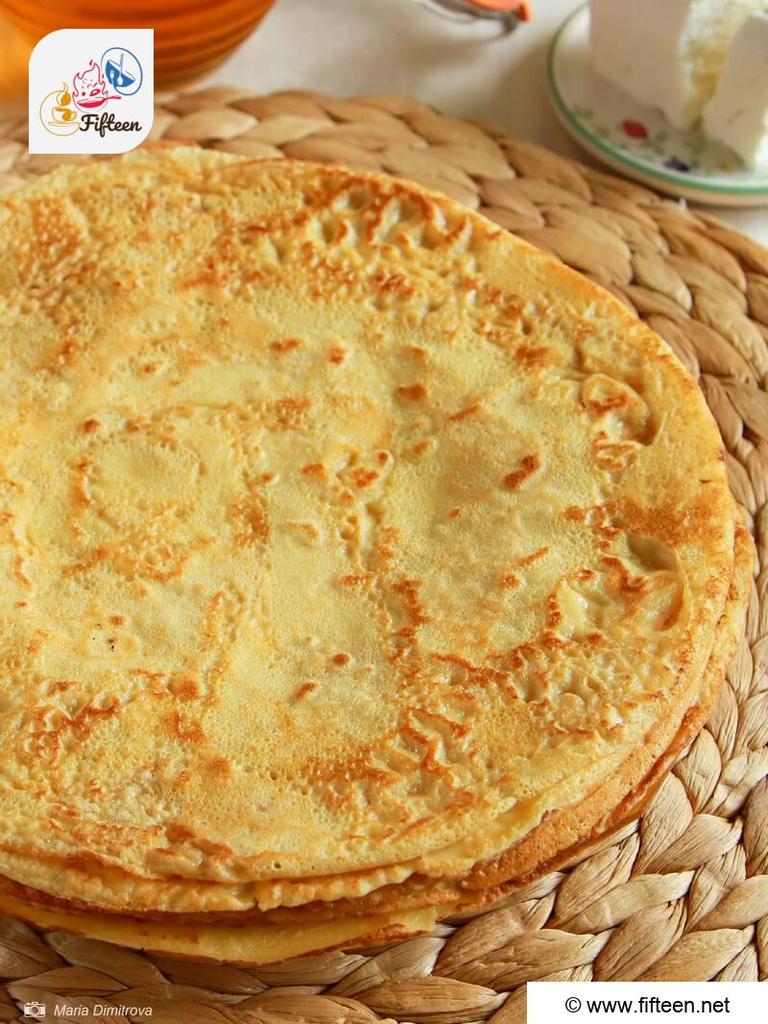
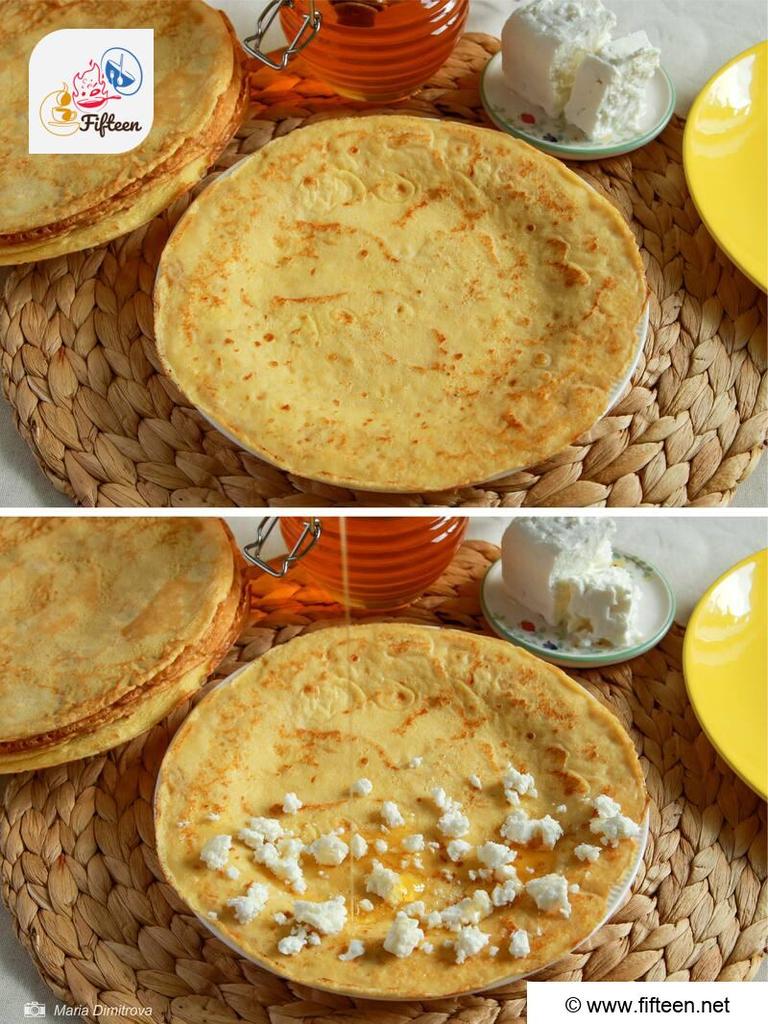

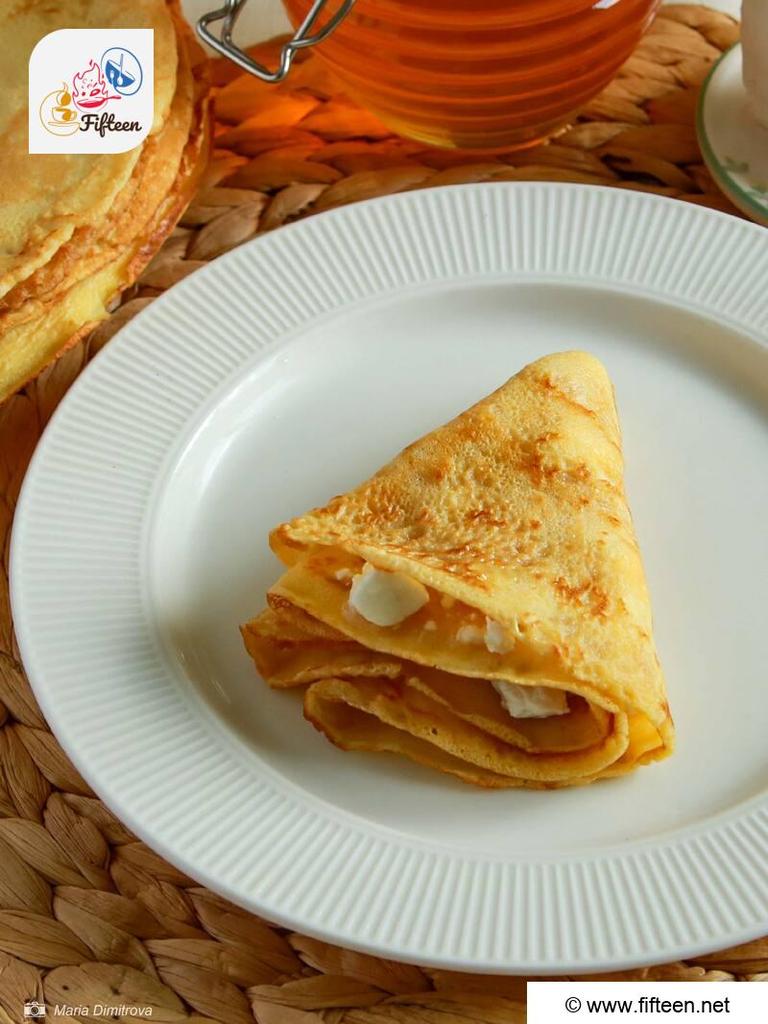
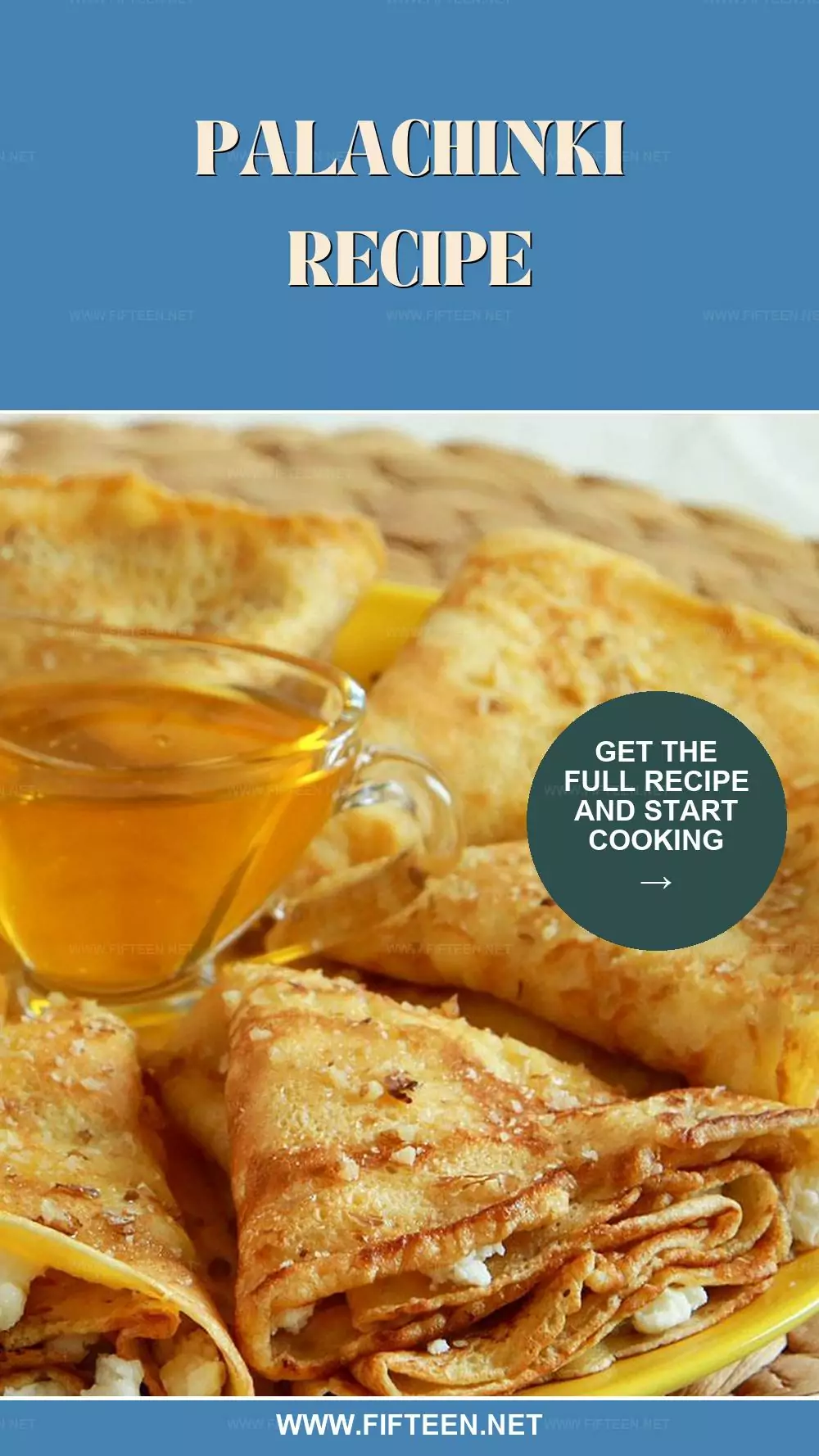
Mia Dimitrova
Content Writer
Expertise
Home Cooking, Meal Planning, Food Styling, Food Photography, Culinary Storytelling, Cooking-video Maker, European Food Content Creator, Bulgarian Food Evaluation Expert
Education
Sofia University “St. Kliment Ohridski”
Completed a thesis titled “Bulgaria on a Plate: A Photographic Journey through our Gastronomic Legacy.”
European Culinary Arts Academy
Maria Dimitrova, or Mia, is a Contributing Writer from Sofia, Bulgaria. Her work beautifully intertwines the rich flavors of Bulgarian and European dishes with their visual storytelling, capturing the soul of each cuisine. Through engaging content and stunning photography, Maria explores the intricate relationship between food’s aesthetic appeal and cultural history.
Specializing in home cooking, food styling, and photography, she brings European culinary traditions to life, offering a unique glimpse into Bulgaria’s gastronomic heritage. Maria’s expertise highlights her deep appreciation for culinary art and invites her audience to embark on a flavorful journey through Europe’s diverse food landscape.